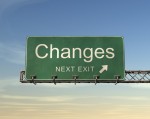Do You See What I See?
Look at the picture. What do you see?
I took this picture while sailing from Saltrey Bay to Horseshoe Bay in British Columbia. Initially, as we were sailing around the small islands, all I saw was the grey sky, water, and mountains. Then my perspective shifted and that’s when it took shape — the head of a sleeping giant. Look again, can you see it? Don’t worry if you can’t my husband couldn’t see it either.
It’s all about perception.
Perception’s Influence on Change
Perception is one of the four markers of the Whitespace. It exerts a powerful influence on the success or failure of your organizational change efforts. Research has found senior and middle managers often hold different perceptions of the same change. Failing to acknowledge and address potential differences in perception can hurt your change efforts. That’s why in the Living and Leading Change Management Certificate Course we show leaders how to discover and work with differences in perception.
Perception will impact your change efforts in three ways:
- Belief about the change event. Your beliefs about the organization, its change capability, and its history with change will influence your perception. This in turn shapes your perception of a specific change event. If the change is perceived as a threat you will respond accordingly. Alternatively, perceive the change as an opportunity and you are more likely to be open to the Event.
- Value of communication efforts. Your perception of the change influences your communication. As a leader it will influence the information you provide, the way it is provided and the messenger. For your employees and others affected by the Event, perception influences the way the information is interpreted. That is why two people can hear the same speech, attend the same meeting or presentation and walk away with completely different views on what was heard and accomplished. Another important but often overlooked influence of perception is the way it influences what is not said–what is read into any communication about your change efforts.
- Willingness to Act. Perceived capability is another of the four markers of the Whitespace. It is our belief about our ability to engage in an activity or behaviour. It is a powerful predictor of behaviour, regardless of training and skill. In my research, exploring nurses’ readiness to adopt an electronic health environment, found perceived capability accounted for about 50% of nurses’ readiness.
Work with Perception Not Against It
Some leaders try to dismiss the employees’ perception as inaccurate or wrong. This is a mistake. When it comes to change the old adage, perception is reality has never been more true. Leaders and employees have different views of the organization. Therefore it’s not surprising they may have a different perception of the need for the change, its outcome, and its complexity. Leaders who learn to work with and from the employees’ perception of the Event set the change-up for success.
Here are three questions that can help you work with perception and not against it:
- How does your perception of a current change initiative differ from your employees?
- What influence are your beliefs and knowledge of the change event and the organization having on your perception of it?
- What influence are your employees’ beliefs and knowledge of the change event and the organization having on their perception of it?
HELPING YOU MOVE CHANGE FROM A LIABILITY TO AN ASSET FOR YOUR ORGANIZATION!
Dr. Dawn-Marie Turner





